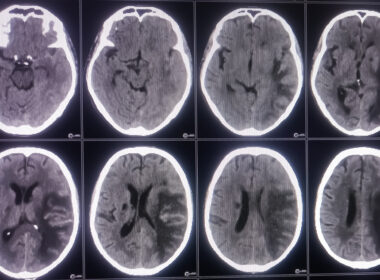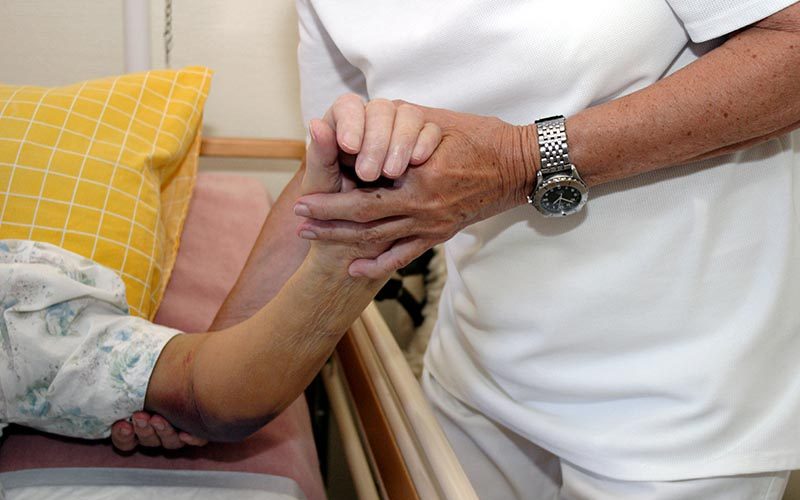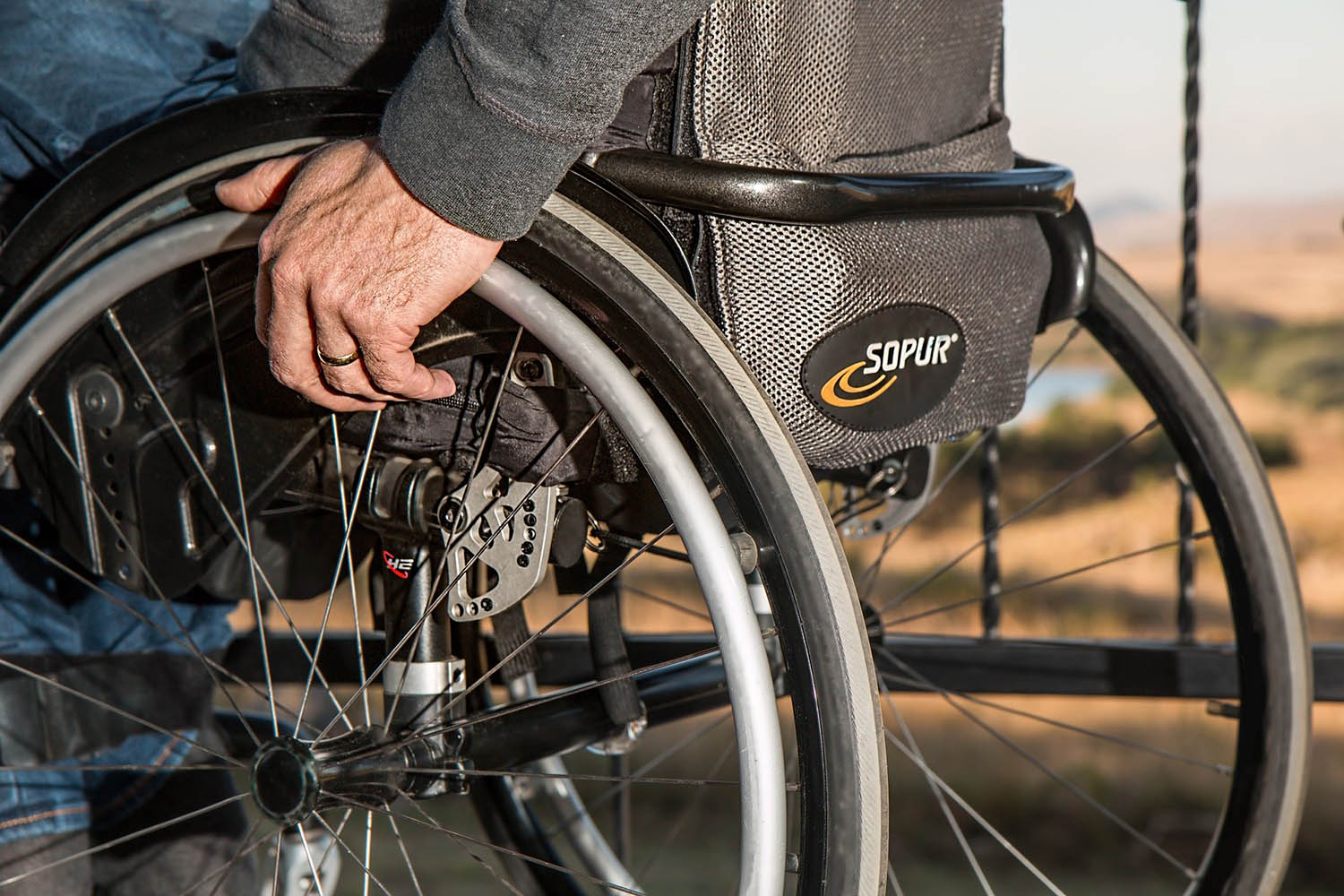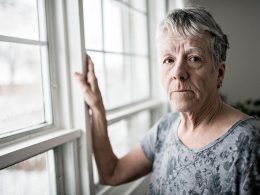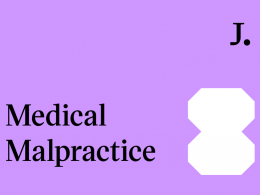Elder abuse occurs when a resident in a nursing home is subjected to unwelcome physical, emotional, or sexual activity. Our nursing home abuse & neglect attorneys have compiled several disturbing cases of abuse in nursing homes statistics.
For a variety of reasons, residents in nursing homes are subjected to abuse and neglect. Negligence by the facility’s managers or owners is frequently at the issue’s root. There is just no justification for abuse, no matter how unintentional.
Negligence in nursing homes can be deemed abuse, which is exacerbated partly because of the high number of facilities with insufficient staff. This is why there is a rise in elderly abuse statistics in nursing homes.
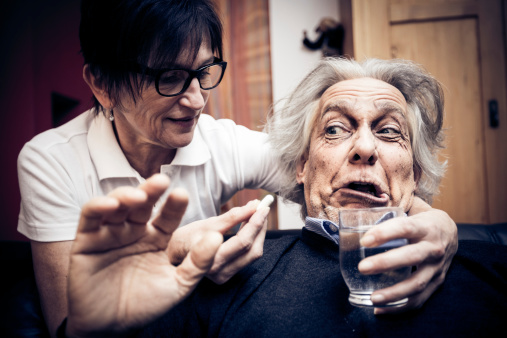
What Is Known About Elder Abuse in Residential Long-Term Care Settings?
There has been minimal research on elder Abuse though evidence suggests it can reach as wide in the community as child abuse. Although attention has been rising recently, much research has concentrated on community incidences, causes, and risk factors. Older people living outside the family home receive little attention from research or policy communities and are more prone to adding to the nursing home neglect statistics.
Get the Facts You Need About Nursing Home Abuse
Nursing home abuse statistics show the harms of older people being abused in assisted living facilities. Researchers conduct studies on nursing care abuse and compile statistics to understand this widespread issue better. Here are the latest nursing home abuse statistics.
In the United States, there is an epidemic of nursing home abuse. According to the most recent data from the Nursing Home Abuse Justice, there are an estimated 5 million elder abuse cases each year. Ten percent of persons over 60 say they’ve been mistreated at some point.
Abuse and neglect are more common among the elderly and vulnerable members of society.
There are numerous sorts of abuse and neglect. Physical abuse can be purposeful and direct in some circumstances. It could be at the hands of a nursing home employee or another patient.
A lack of adequate care can result in physical damage that could have been prevented if abuse or neglect had not occurred. In nursing facilities, for example, falls are a typical occurrence, with an annual average of 1.5 falls per resident.
At least a portion of nursing home falls caused by abuse or neglect.
Many nursing home residents are subjected to emotional and psychological abuse and physical violence. Fifty-five percent of nursing home patients were depressed in the first year of their stay, according to research from 2005.
Detecting emotional and psychological abuse is very challenging. Even if the abuse does not leave visible scars, it harms the victim’s mental and emotional well-being.
When signs of abuse at a nursing home emerge, family members must intervene quickly to safeguard their most vulnerable loved ones.
Another major problem in nursing homes is medication errors. Many residents in nursing homes are suffering from polypharmacy, which refers to taking various medications.
According to a study, a medicine inappropriate for their condition was given to 37.5% of patients with severe dementia in a Boston nursing home.
The Importance of Statistics in Nursing Homes Abuse
Although nursing home abuse is widely acknowledged, it remains largely overlooked. Fortunately, statistics from nursing home abuse can help us understand the problem and how it happens. The nursing home abuse report provides snapshots of why abuse occurs, the risks it causes, and how people are affected. We collected dozens of nursing home abuse statistics from leading organizations such as NCOA, WHO, and NEA. Keep reading to find answers and ways to help a loved one, especially when discussing elder financial abuse statistics.
Is Abuse in Nursing Homes a Common Problem?
Elderly abuse in care homes violence affects millions of individuals annually. More than 14,000 complaints have been made to the nursing home ombudsman, representing abused or neglected people. In addition, in 2013, NCVC reported that almost 11,000 people complained of abuse in nursing homes. The NCVC lists a list of nursing home abuse complaints in their midst. The report estimates that over 500,000 elderly persons are affected annually. Although nursing home abuse is common in many cases, it is difficult to determine a definitive number of these. Researchers have gathered some of the details from the study.
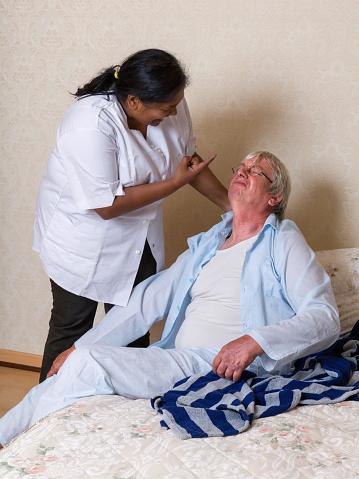
Evidence of Abuse and Neglect in Residential Care Facilities in the United States
No federal standard for residential care is known in more than thirty languages throughout the nation. In consequence, the database does not contain national data about deficiencies. It is, therefore, much harder in the care system for people to estimate how much abuse or neglect has happened in their lifetimes and give proper elder neglect statistics. Several sections examine current knowledge on the type of care facility being operated or affected and discuss the problems related to violence and neglect.
Stats on Elder Abuse’s Importance
By 2018 there were 52 million Americans under 55. Around a quarter of them suffers elder abuse every year. The abuse of elders often involves physical injury, money exploitation, or sexual assault. Anybody can commit elder abuse by a caregiver to a friend or another caregiver. Concerned individuals are urged to read all the relevant facts regarding elder Abuse to understand the extent. Keep reading to learn more about inpatient abuse statistics.
How Often Do People Exploit the Elderly?
A recent report published in The American Journal of Aging said a quarter-million seniors are being neglected, and the figures are inaccurate. However, it has not been revealed exactly how many elderly victims have been beaten or killed in the last year. According to WHO, only one in 24 elder violence reports has been filed.

Statistics About Nursing Home Neglect
Neglect is a failure to meet the basic needs of a senior, like food, accommodation, and care for the elderly. Often neglect in a nursing home is not intentional but can cause lifelong damages, leading to increased nursing home negligence statistics.
Statistics on Nursing Home Abuse
Nursing homes are intended for the elderly who need help when they have difficulty completing tasks. However, some people suffer from nursing home abuse.
According to a study by the U.S. Bureau of Justice Statistics, elder abuse statistics is growing exponentially, click here to learn about what You Need To Know Before Suing A Nursing Home For Negligence.
Nursing home abuse statistics by type
Residents of nursing homes have legally protected rights and are entitled to the best care. Elderly residents in nursing homes are routinely assaulted, neglected, and abused by their caregivers.
The top seven types of nursing home abuse are:
- Abandonment
- Emotional Abuse
- Financial exploitation
- Neglect of a resident’s basic needs
- Physical Abuse
- Self-neglect
- Sexual assault
All forms of nursing home abuse can seriously harm older people. Residents, family members, and friends must know the various types of abuse and the warning signs they can look out for. Nursing home abuse can cause long-term harm if it isn’t taken care of quickly.
Contact us for a free case review if you or a loved one has been abused or mistreated in a nursing home. Depending on the severity of your injuries, you may be eligible for financial compensation.
Abuse in a nursing home can include physical, emotional, financial, sexual, and neglect, according to the National Center on Elder Abuse (NCEA). Self-neglect and abandonment are other forms of nursing home abuse.
Listed here are some typical forms of nursing home abuse.
Physical Abuse
Physical abuse is considered physical abuse when a resident is physically harmed in a nursing home. According to a WHO 20 study, nearly 10% of nursing home staff admitted physically abusing patients (WHO).In a nursing home, physical abuse can take the following forms:
- Kicks and punches
- Strapping or tying oneself up
- Being shoved around by other residents
People who have been physically abused often show signs of broken bones, bruises, and bloodied skin. Anyone can be a victim of physical abuse, but Alzheimer’s patients may be especially vulnerable.
Physical abuse of the elderly can result in serious injuries or even death if it goes untreated. Financial assistance may cover medical bills and emotional suffering if you or a loved one has been the victim of physical nursing home abuse.
Emotional Abuse
There is a type of emotional abuse called verbal or psychological abuse, when someone insults a person or uses threats to control them. This is the most common form of nursing home abuse. According to the WHO, more than a third of nursing home staff members admitted emotionally abusing patients.
Emotional abuse examples include:
- preventing a resident from doing what they want;
- insulting the appearance or intellect of the occupant;
- Isolating the elderly from their loved ones, friends, and neighbors;
- Threatening others.
Emotional elder abuse can lead to long-term mental health issues such as depression, anxiety, and post-traumatic stress disorder in those who are abused emotionally (PTSD). Changes in mood or behavior may indicate that a loved one has been subjected to emotional abuse.
Nursing Home Neglect
Staff members who fail to provide adequate medical attention to residents in nursing homes are considered to be engaging in nursing home neglect. Physical and emotional well-being is negatively impacted as a result.
Neglect is not the same as abuse in a nursing home. In contrast to abuse, neglect in a nursing home results from carelessness or apathy on the part of the facility’s staff.
Nursing home neglect examples include:
Medication Errors
Residents of nursing homes can rely on staff to administer their medications. When administering drugs to residents, the team may make mistakes. Complications can be life-threatening if this happens.
Personal Hygiene
The nursing home staff’s responsibility is to assist residents with personal hygiene needs, such as changing their clothes and washing their dishes. If they don’t, residents of nursing homes run the risk of developing health problems from being forced to live in filthy garments for long periods.
Malnourishment and dehydration
Resident caretakers at a nursing home may not provide enough food or water to patients. Malnutrition, dehydration, and extreme weight loss are possible consequences.
Was a loved one in a nursing home abused or neglected? You can get immediate justice by contacting Justpoint.
Sexual Abuse
This is a form of abuse when a resident is subjected to unwanted sexual contact, touching, or groping. Bruises, scratches, and sexually transmitted diseases can result from sexual abuse and emotional trauma.
Disabled or unable-to-give-consent residents are frequently the victims of sexual elder abuse.
In some cases, female residents have accused male nursing home staff of sexual assault.
Financial Abuse
Theft or manipulation of money from an older adult constitutes financial elder abuse.
The following are some instances of financial abuse:
- Changing a person’s will through the use of a power of attorney;
- Denying access to the bank account of the resident;
- Stealing money, credit cards, or other valuables from a resident;
- Stealing a resident’s bank statements or financial records.
Resident stress levels can skyrocket due to financial abuse, as they may lose their ability to pay for their long-term care.
Self-Neglect
Those over the age of 65 who are unable to take care of themselves are at risk of developing severe health problems.
Aging in a home or apartment by oneself can lead to self-neglect. If a nursing home resident exhibits any signs of neglect, the facility’s staff may be held accountable.
Elder Abandonment
It is common for caregivers to abandon an older person in their care, leaving them to fend for themselves. Assisted living facilities have been known to abandon residents in nursing homes.
Your loved one may have been the victim of nursing home abuse. To get started, contact Justpoint.
Who Commits Abuse in a Nursing Facility?
Abuse in a nursing home can take many forms. These include nursing home staff, administrators, residents, and family members.
Nursing Home Staff Members
Frustrated or enraged employees may inflict harm on residents. If they aren’t adequately trained or the facility is understaffed, they may not be able to care for a resident’s basic health needs properly.
There is no justification for nursing home staff to harm patients. Employees should be held accountable if they have abused or neglected an elderly client.
Nursing Home Administrators
Administrators of long-term care facilities have a significant impact on the quality of care provided to residents.
Understaffing nursing homes and failing to take safety precautions are just a few ways administrators who are greedy for profits can put profits ahead of seniors’ needs.
Residents may also be subjected to emotional or verbal abuse by administrative staff. This can be done by delaying or withholding responses to critical issues and concerns or by ignoring them altogether.
Other Residents of the Nursing Home
Nursing home abuse can be committed by anyone in the facility, not just the patients. It is possible that nursing home staff members could be held responsible if they fail to prevent dangerous residents from harming others.
Family Members
Family members who visit their elderly relatives in nursing homes can also be abusive.
Nursing homes are obligated to keep residents safe from abuse, even if the perpetrator is someone in the residents’ own families. Staff must monitor family members’ interactions and look for signs of abuse.
Nursing home staff members should take complaints about the relationship between residents and visiting relatives seriously.
Victims of Nursing Home Abuse: What to Do Now
There is no place for abuse of any kind in a nursing home. The good news is that if an elderly family member has been injured in a nursing home, you can take steps. If you or your loved ones are victims of nursing home abuse, don’t panic. Follow the proven steps below :
- If a resident of a nursing home is in any danger, dial 911 immediately;
- If you suspect an elder abuse case, contact an elderly ombudsperson or Adult Protective Services directly;
Find a nursing home abuse lawyer through JustPoint.
Physical abuse in the Nursing Home
Nursing home abuse usually occurs when patients are hurt by force or punching. The condition can cause deteriorating mental health problems, including concussions.
Victimization in Nursing Homes: Its Long-Term Effects
Elder abuse affects seniors ‘ lives in nursing homes and private residences. Moreover, they may lead to substantial monetary issues as well.
How Do You Define the Terms “Abuse and Neglect”?
The physical abuse definition relates to injuries or harms that are carried out to cause suffering, pain, or disability.
What is the most common abuse in nursing homes?
Emotional or psychological abuse occurs whenever one insults or uses violence against the residents. It is a typical nursing home abuse. More than three percent of all nursing homes are emotionally abused.
What percent of elders are abused?
Almost 10% of the elderly experience some form of elder Abuse yearly, while others experience many types of abuse.
What is the most common abuse in the elderly?
Financial abuse is more commonly reported among elders than physical or sexual abuse. Psychological violence is most commonly reported in older adults.
What state is elder abuse most common in?
Sadly, most cases will not be reported until later in the year. Across the country, California still has more elderly abuse claims per person than Florida, which has more cases.
Keep reading here, to learn more about Elder’s rights .
Preventing Elder Abuse by Teaching Residents of Nursing Homes
Elder abuse avoidance training can help older people recognize when something is wrong so they can seek help before it gets worse.
Elder Abuse Prevention skills also teach people how to live more independently by teaching them simple but effective self-care techniques, such as asking for help if necessary.
Residents of elder care facilities who learn how to avoid elder abuse will be more self-reliant and less reliant on others in the future. These classes are offered by attorneys specializing in elder abuse cases and can teach the victims how to avoid or refer them to an Elder Abuse Prevention Practitioner.
Elder abuse victims should be aware that they have legal recourse available to them if they are harmed due to carelessness. Abuse in a nursing home must have severe repercussions, especially against elderly residents.
Ethnicity in Nursing Home Abuse statistics
For nursing home caregivers and their families, cultural sensitivity is just as important as it is for everyone else. Speaking to the elderly in a language they are familiar with can alleviate any sense of alienation or discomfort they may be experiencing as a result of misunderstandings or misunderstandings.
Race-Based Data on Nursing Home Abuse
According to a 2010 study by the Department of Health and Human Services, residents of African-American nursing homes were more likely than others. Most nursing home residents are either victims or potential victims of abuse for every sixth African American resident.
An imbalance in favor of females can be seen here. Most African American women who are abused in nursing homes fall into this category. In contrast, 90% of victims of domestic violence in the Caucasian community are men.
According to the Department of Health and Human Services, nursing home abuse of Caucasian residents outnumber African Americans.
Gender-Based Analysis of Abuse in Long-Term Care Facilities
In nursing homes, men are twice as likely to be abused as women, but women are twice as likely to die due to that abuse. Approximately two women die each time a man dies due to suspected misuse.
Abusers have an easier time getting away with their crimes against women because they are already bedridden and unable to defend themselves.
Statistics on Nursing Home Abuse by Age Group
According to US Department of Health and Human Services data, nursing home residents are, on average, 80 years old. This statistic is heavily skewed by race.
Elderly African Americans, Caucasians, and Hispanics are the most frequently abused in nursing homes.
Statistics on Nursing Home Abuse Based on Income Level
30% of elderly residents in nursing homes fall below the federal poverty level, according to recent studies. People who make a lot of money but are forced to sell assets to pay for care aren’t included in this calculation.
Some experts believe that those who are less well-off may be more vulnerable to abuse.
Abuse in the Mental Health System
Patient abuse in skilled nursing facilities is more common among people with mental illnesses, according to the United States Department of Health and Human Services (HHS).
Patients with Alzheimer’s or other forms of dementia, for example, are more likely than other patients to be abused by medical professionals, such as nurses and aides.
Autism and depression are among the conditions that increase the risk of abuse in nursing homes. As you may have gathered, the statistics on nursing home abuse for various demographic groups are extensive.
National Surveys of Abuse and Neglect in American Nursing Homes
There is a severe problem of elder abuse in nursing homes in the United States, particularly for those over 65. In 2010, there were more than 14,000 cases of serious bodily injury caused by caregivers in nursing homes.
Nursing home abuse resulted in the following injuries:
- significant injuries to the body caused by bruises.
- Some fractures should not have occurred in the first place.
- Inattention leads to pressure ulcers developing in the patient’s
Injuries that are considered severe by caregivers, other residents, and family members can occur. If you or your loved ones experience the following symptoms, speak to us now.
Negligent treatment or maltreatment, such as overmedicating or administering the incorrect medication, resulted in 2,807 cases in 2010.
Like a large number, the number of nursing home abuse cases may be much higher. In 2009, there were more than 11,000 reported nursing home abuse and neglect cases.
Elder abuse is most frequently committed by family members and in-home caregivers at the older adult’s home. Nursing homes and assisted living facilities aren’t the only places where this can happen to residents and staff.
Neglect is the most common form of elder abuse, and it occurs when the person tasked with their care stops doing it rather than because they intend to harm them.
Physical assault and sexual abuse of the elderly are two examples of intentional abuse by nursing home staff members, including certified nursing assistants.
More than 2,000 physical or mental abuse incidents occurred in nursing homes and assisted living facilities in 2010.
Abuse of the Elderly and the Nursing Home Residents
Most nursing home abuse and neglect cases go unpunished, even though some have been charged. Even when patients are prosecuted, less than 7% of those found guilty are sentenced to prison time, which helps to explain why only 14% of elderly victims report their ordeals of abuse and neglect to someone who can help them.
An outcome favorable to the victim, such as having their nursing home rights restored or being transferred to another facility, occurs in only one out of every twenty-five cases.
Is There Anything Else I Can Do After Nursing Home Abuse?
Do not wait until it is too late to report suspected abuse in a nursing home; do so immediately. You should report it to help them and prevent it from happening again.
Reporting nursing home abuse is fraught with anxiety for many who are afraid of being held accountable or facing retaliation from those who committed the crime.
Contact an experienced nursing home abuse lawyer for guidance on how to go about reporting the incident. For victims and family members of victims, they can protect your rights and prevent you from becoming a part of the prosecution.
Do Not Follow the Crowd and add to the nursing home abuse statistics. Take action now to ensure the safety of your loved one.
When defending your rights against large insurance companies, the team at JustPoint isn’t afraid to go to War for you. We have a team of seasoned personal injury lawyers who will work tirelessly to ensure you receive the compensation you are entitled to.
Why Am I Interested in Elder Abuse Statistics?
In 2018, there were 52 million Americans aged 65 and over. According to some estimates, elder abuse affects an estimated one in ten of this population each year.
The perpetrators of elder abuse can be anyone, including members of the victim’s family, nursing home staff, or other residents. There are many ways in which the elderly are abused, including physical harm, financial exploitation, and even sexual battery.
Concerned families should review the most recent and relevant statistics and facts on elder abuse.
Conclusion
Elder abuse cases are expected to rise as the population ages. Elder abuse cases are expected to rise dramatically as the world’s population ages. Sadly, the root causes of elder abuse vary from case to case, and the full scope of the problem is still unknown. A family’s best defense against abuse is to keep an eye out for it and report any signs to the appropriate authorities.
Get a free case review today to learn more about elder abuse. You can rely on our team to help you find the medical and legal resources you need to protect your loved one. Dont add to the bad elder abuse statistics. Speak up now.




